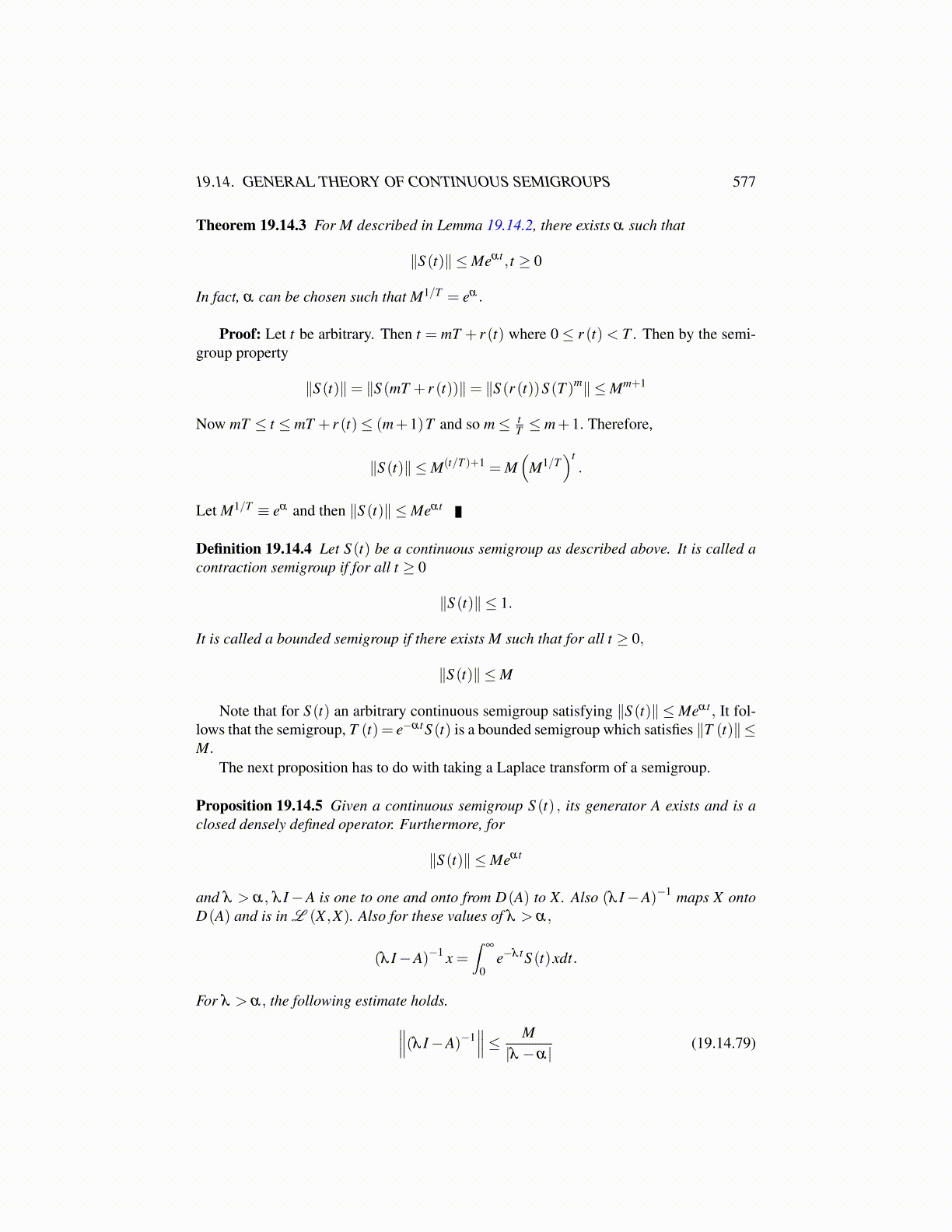
19.14. GENERAL THEORY OF CONTINUOUS SEMIGROUPS 577
Theorem 19.14.3 For M described in Lemma 19.14.2, there exists α such that
∥S (t)∥ ≤Meαt , t ≥ 0
In fact, α can be chosen such that M1/T = eα .
Proof: Let t be arbitrary. Then t = mT + r (t) where 0 ≤ r (t) < T . Then by the semi-group property
∥S (t)∥= ∥S (mT + r (t))∥= ∥S (r (t))S (T )m∥ ≤Mm+1
Now mT ≤ t ≤ mT + r (t)≤ (m+1)T and so m≤ tT ≤ m+1. Therefore,
∥S (t)∥ ≤M(t/T )+1 = M(
M1/T)t.
Let M1/T ≡ eα and then ∥S (t)∥ ≤Meαt
Definition 19.14.4 Let S (t) be a continuous semigroup as described above. It is called acontraction semigroup if for all t ≥ 0
∥S (t)∥ ≤ 1.
It is called a bounded semigroup if there exists M such that for all t ≥ 0,
∥S (t)∥ ≤M
Note that for S (t) an arbitrary continuous semigroup satisfying ∥S (t)∥ ≤Meαt , It fol-lows that the semigroup, T (t) = e−αtS (t) is a bounded semigroup which satisfies ∥T (t)∥≤M.
The next proposition has to do with taking a Laplace transform of a semigroup.
Proposition 19.14.5 Given a continuous semigroup S (t) , its generator A exists and is aclosed densely defined operator. Furthermore, for
∥S (t)∥ ≤Meαt
and λ > α, λ I−A is one to one and onto from D(A) to X. Also (λ I−A)−1 maps X ontoD(A) and is in L (X ,X). Also for these values of λ > α,
(λ I−A)−1 x =∫
∞
0e−λ tS (t)xdt.
For λ > α, the following estimate holds.∥∥∥(λ I−A)−1∥∥∥≤ M|λ −α|
(19.14.79)